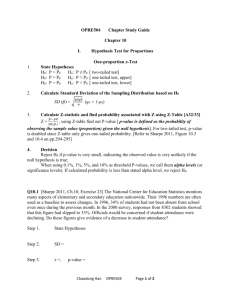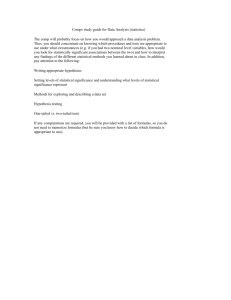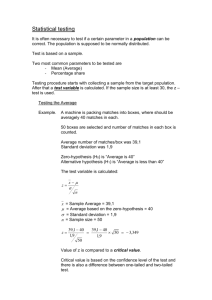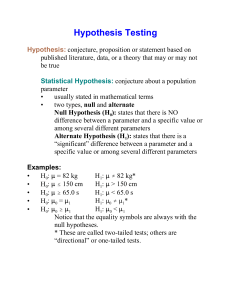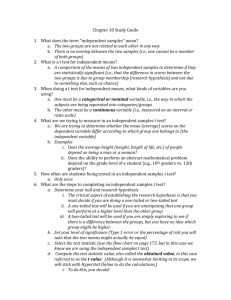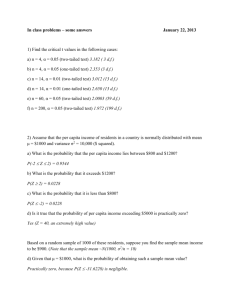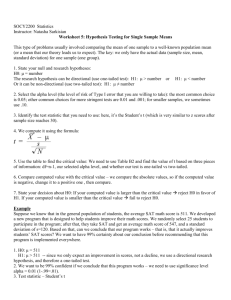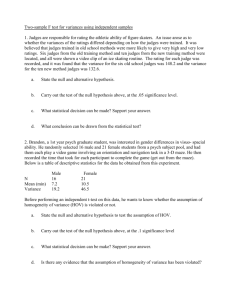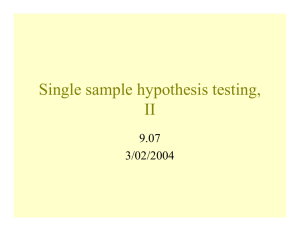Updated Notes about Chapter 5
advertisement
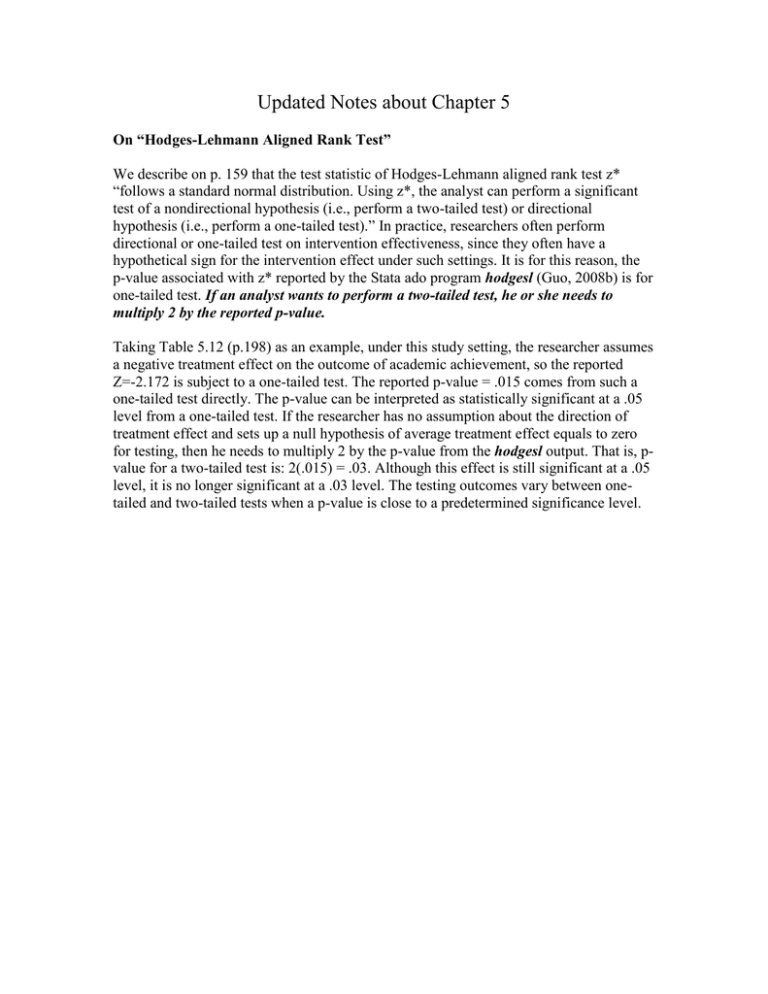
Updated Notes about Chapter 5 On “Hodges-Lehmann Aligned Rank Test” We describe on p. 159 that the test statistic of Hodges-Lehmann aligned rank test z* “follows a standard normal distribution. Using z*, the analyst can perform a significant test of a nondirectional hypothesis (i.e., perform a two-tailed test) or directional hypothesis (i.e., perform a one-tailed test).” In practice, researchers often perform directional or one-tailed test on intervention effectiveness, since they often have a hypothetical sign for the intervention effect under such settings. It is for this reason, the p-value associated with z* reported by the Stata ado program hodgesl (Guo, 2008b) is for one-tailed test. If an analyst wants to perform a two-tailed test, he or she needs to multiply 2 by the reported p-value. Taking Table 5.12 (p.198) as an example, under this study setting, the researcher assumes a negative treatment effect on the outcome of academic achievement, so the reported Z=-2.172 is subject to a one-tailed test. The reported p-value = .015 comes from such a one-tailed test directly. The p-value can be interpreted as statistically significant at a .05 level from a one-tailed test. If the researcher has no assumption about the direction of treatment effect and sets up a null hypothesis of average treatment effect equals to zero for testing, then he needs to multiply 2 by the p-value from the hodgesl output. That is, pvalue for a two-tailed test is: 2(.015) = .03. Although this effect is still significant at a .05 level, it is no longer significant at a .03 level. The testing outcomes vary between onetailed and two-tailed tests when a p-value is close to a predetermined significance level.

